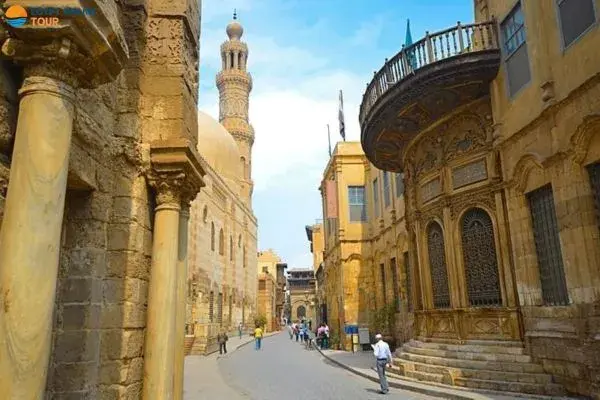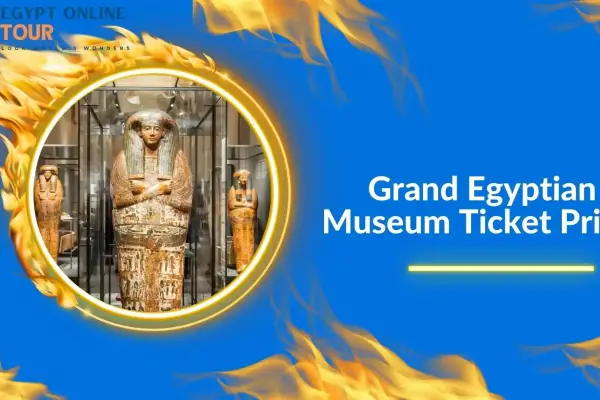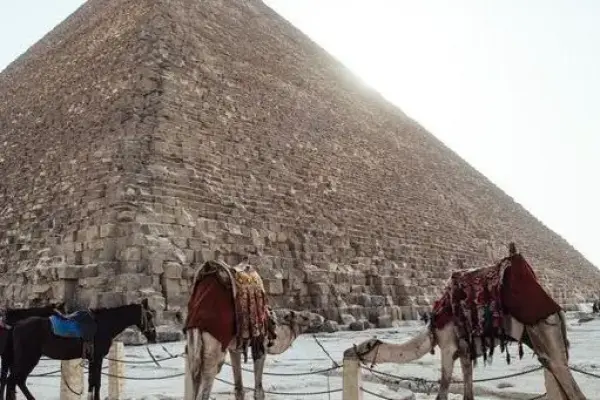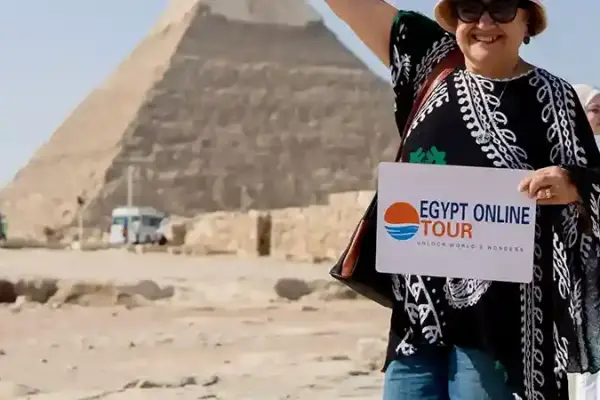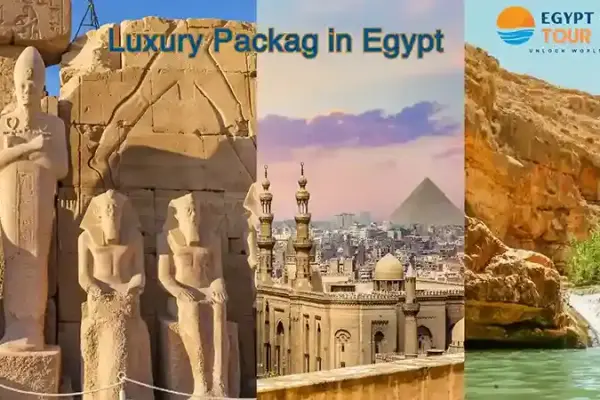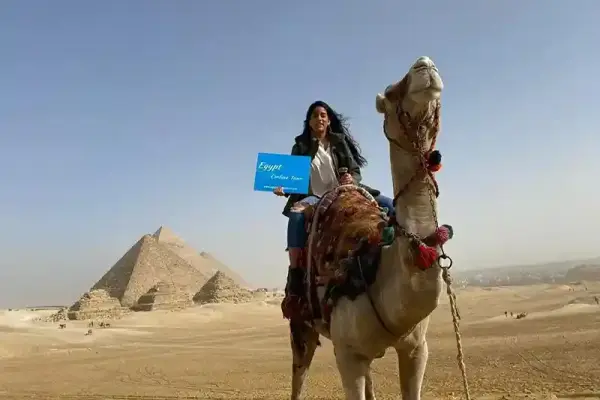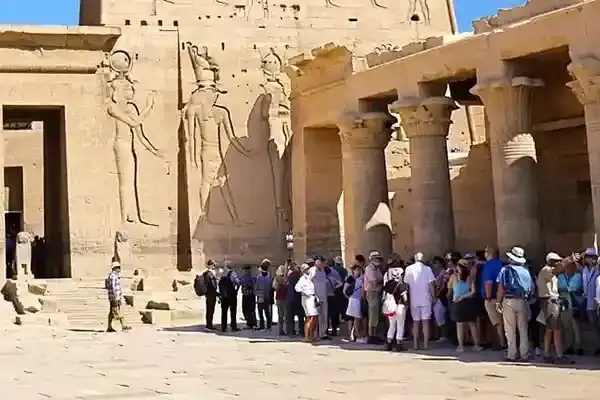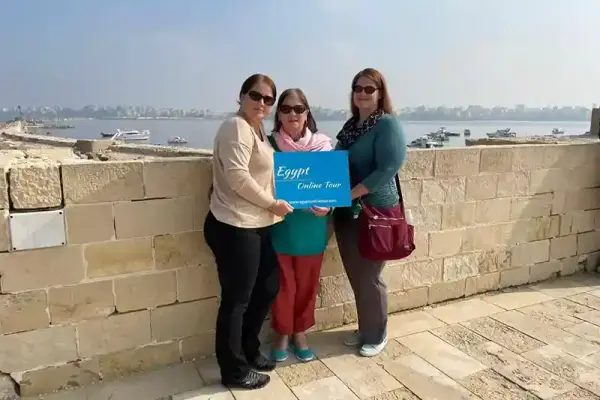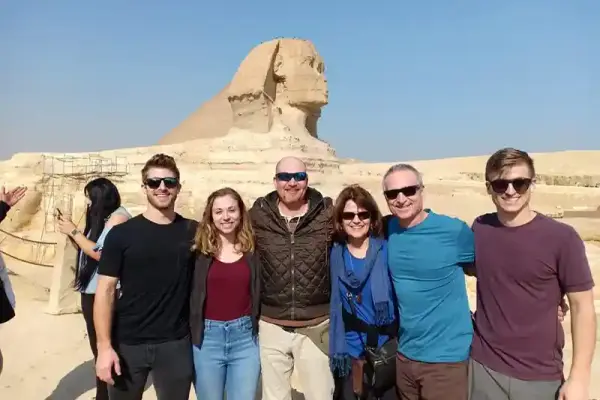Al Moez Ldin Allah Al Fatmi Street stands at the heart of Cairo’s old city.
Have you ever walked through a place where every wall tells a story?
Here, faith, trade, and art meet in one timeless path. Each step connects you to Egypt’s living history, where the sound of prayer, the scent of spice, and the glow of ancient lamps remind you that the past still breathes in the present.
Table of contents [Show]
- Al‑Moez Street Overview
- Location and access
- Best Time to Visit Egypt: What Season Suits You Best?
- Al Moez Street Smart Walking Loop (South-to-North Itinerary in 90 Minutes)
- Fatimid to Mamluk Timeline
- Architectural Highlights
- Iconic Monuments on Al Moez Ldin Allah Al Fatmi Street
- Madrasas and Sabil-Kuttabs
- Caravanserais and Markets, Living Threads of Cairo’s Trade
- Museums and Houses on Al Moez Ldin Allah Al Fatmi Street
- Shoot‑Worthy Angles on Al Moez Street
- Visitor Rules
- Street Life and Crafts
- Food and Cafés
- Events and Closures
- Accessibility Notes
- Book your Al-Moez walking tour
- Summery
Al‑Moez Street Overview
Al‑Moez Ldin Allah Al Fatmi Street is one of Cairo’s oldest and most remarkable landmarks. Walking through it feels like stepping inside a living timeline. You don’t just see history, you feel it in every call to prayer, every stone arch, and every scent drifting from the markets.
Located in the heart of Old Cairo near Khan El Khalili, this street connects over 1,000 years of Islamic architecture with the pulse of daily Egyptian life. From dawn to sunset, you can move between eras without leaving the same path.
Why this historic spine matters
Al‑Moez Street isn’t a museum behind glass; it’s Cairo’s open‑air storybook. You see faith, art, trade, and community layered together.
- The Fatimid Beginning. Built in the 10th century, this street formed the main axis of the new Fatimid capital. It soon became the core of Cairo’s growth.
- Layers of Time. As you walk, you pass through Fatimid, Mamluk, and Ottoman legacies. Each era left mosques, schools, homes, and fountains that still stand strong.
- A Living Museum. Shops, cafes, and artisans fill the same lanes once used by scholars and merchants. The mix of old and new makes the street alive, not frozen.
- World Heritage Status. Recognized by UNESCO, it remains one of the richest collections of Islamic monuments on earth.
- Heart of Islamic Cairo. The street links two gates, Bab al‑Futuh and Bab Zuweila, and forms the true backbone of old Cairo.
What to See Along the Street
Era | Architectural Legacy | Must-See Highlights Today |
Fatimid (10th–12th C) | Laid the street’s foundation and built key mosques | Al-Hakim Mosque, original city layout |
Mamluk (13th–16th C) | Constructed grand palaces and madrasas | Qalawun Complex, Sultan Barquq Mosque |
Ottoman (16th–19th C) | Added ornate sabils and elegant merchant houses | Bayt Al-Suhaymi, Ghouri Complex |
Modern Era | Focused on restoration and cultural revival | Evening lights, open-air performances |
Quick Visitor Facts
Feature | Details |
Location | Old Cairo, near Khan El Khalili |
Length | Around 1 km |
Best Time to Visit | Late afternoon or evening |
Entry Fee | Free (some monuments charge small fees) |
Access | Metro (Ataba), taxi, or guided walking tours |
Ideal Duration | 2–3 hours |
Local Experience | Street food, handmade crafts, and oud music |
Lighting at Night | Adds charm and safety for evening walks |
Tips for Visitors
- Go late in the afternoon to enjoy both daylight and evening lights.
- Wear comfortable shoes; the street is best explored on foot.
- Bring small cash for entry fees or local snacks.
- Visit with a licensed guide to learn hidden stories behind each monument.
- Don’t rush, sit for tea, watch artisans at work, and feel the rhythm of the city.
Why You’ll Remember It
Al-Moez Street doesn’t just show you Cairo, it lets you feel it. You hear echoes of history, catch the scent of spice in the air, and pause as the call to prayer rises between domes.
One moment you’re passing a carved wooden door, the next you're hearing laughter from a street café.
This isn’t just a visit. It stays with you.
Read about: Is Cairo safe for American tourists
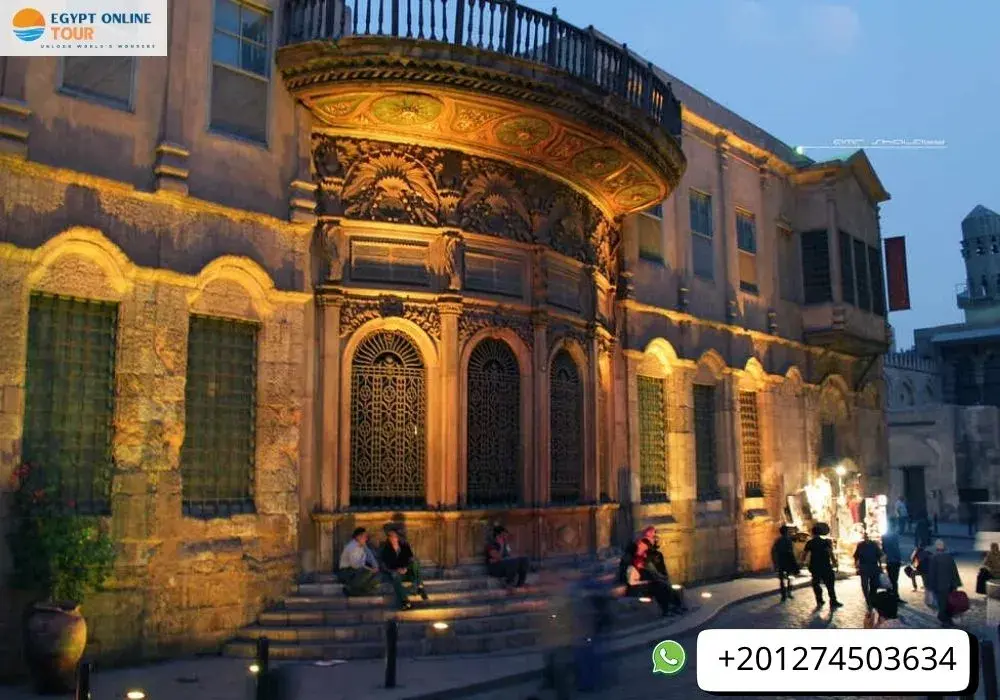
Location and access
Al-Moez Street is one of Cairo’s oldest streets and a UNESCO-listed gem in Historic Cairo. It runs straight through the heart of Islamic Cairo, stretching around 1 km between Bab Al-Futuh in the north and Bab Zuweila in the south. This walking route passes centuries-old mosques, madrasas, markets, and houses, each filled with stories and detail.
How to Explore Al-Moez Street, Cairo in 2 Hours or Less
If you want to visit Al-Moez Street efficiently, I give you a complete, easy-to-follow plan.
Where Is Al-Moez Street in Cairo?
Al-Moez Street is located inside Historic Cairo, close to the popular Khan El Khalili bazaar. It connects two of the city’s medieval gates, Bab Al-Futuh and Bab Zuweila, and passes through some of Cairo’s most historic neighborhoods.
You can start at either end. However, starting at Bab Al-Futuh is better for navigation and easier transport options.
How to Reach Al-Moez Street
Main Access Options Compared
Option | Nearest Stop | Travel Time | Best For |
Metro | Ataba Station | 10–15 min walk | Budget travelers |
Taxi / Uber | Bab Al-Futuh Gate | Depends on traffic | Direct access to the start gate |
Walking from Khan | Al-Azhar St. | 5 min side walk | Visitors in the Old Cairo area |
Guided Tour | Set a meeting point | Fixed group timing | First-time visitors |
If you use the metro, exit at Ataba station. From there, it's a short, signposted walk to Bab Al-Futuh.
Entrances from Bab Zuweila and Bab Al‑Futuh
Decision Point | Recommended Option | Why It Matters |
Start Gate | Bab Al-Futuh | Easy to find and clear street signs |
End Gate | Bab Zuweila | Close to taxis and local cafes |
Visit Duration | 1.5 to 2 hours | Enough time to explore the main sites |
Navigation Tools | Offline map + signboards | Helps in case of lane detours |
Clothing | Modest, light layers | Respect for religious sites |
Essentials | Hat, water, cash | For comfort and entry fees |
Route Breakdown: North to South
1. Bab Al-Futuh
- Impressive medieval gate from the Fatimid era
- Marks the entrance to Al-Moez Street
- You’ll find many small vendors nearby
2. Al-Hakim Mosque
- Built in 1013, fully restored
- You can enter freely and relax in the wide courtyard
- Often overlooked by casual visitors
3. Bayn Al-Qasrayn Complex
- The true heart of the street
- Houses Sultan Qalawun, Barquq, and Al-Nasir Mohamed complexes
- Rich in Mamluk architecture and carved stone details
- Entry ticket required
4. Khan El Khalili Side Tour
- A short detour to the famous bazaar
- Souvenirs, tea houses, and local crafts
- Return to Al-Moez Street through Al-Azhar Street
5. Bayt Al-Suhaymi
- 17th-century Ottoman house
- Offers a full look into Islamic domestic architecture
- Entry fee required (cash only)
6. Bab Zuweila
- Final city gate with twin minarets
- You can climb the towers for a street-view photo
- An optional extension to the Al-Ghuri complex nearby
Top Sites on Al-Moez Street (Table Summary)
Location | Period | Key Feature |
Bab Al-Futuh | Fatimid | Original gate structure |
Al-Hakim Mosque | Fatimid | Restored courtyard and minaret |
Qalawun Complex | Mamluk | Carved façade, hospital, madrasa |
Barquq Mosque | Mamluk | Fine interior and arches |
Khan El Khalili | Ottoman | Souvenirs and traditional goods |
Bayt Al-Suhaymi | Ottoman | Woodwork, mashrabiyas |
Bab Zuweila | Fatimid | Gate towers and stair climb |
Tips Before You Go
- Bring small cash for entry tickets and snacks.
- Dress modestly, especially if you plan to enter mosques.
- Photograph respectfully, avoid people’s faces unless you ask.
- Keep your bag secure, as the area can be busy.
- Use offline maps in case the internet cuts out.
One-Hour Quick Tour (If You're Short on Time)
- Start at Bab Al-Futuh
- Walk to Qalawun Complex and explore the exterior
- Skip Khan El Khalili detour.
- Finish at Bab Zuweila with a photo stop.
Two-Hour Full Experience Plan
- Begin at Al-Hakim Mosque
- Visit the Qalawun Complex interior
- Pause at Barquq Mosque for details
- Take a short tea break near Bayt Al-Suhaymi
- Detour to Khan El Khalili
- End at Bab Zuweila and climb the tower (if open)
Al-Moez Street is more than a tourist route. It’s a walk through Egypt’s soul, quiet stone corners, domes catching the light, and people still living near walls that witnessed centuries.
Whether you're into Islamic history, architecture, or just want a unique Cairo experience, this route is worth every step.
Thinking about your next getaway? Find out the cheapest time to visit Egypt and make the most of your travel budget.
Best Time to Visit Egypt: What Season Suits You Best?
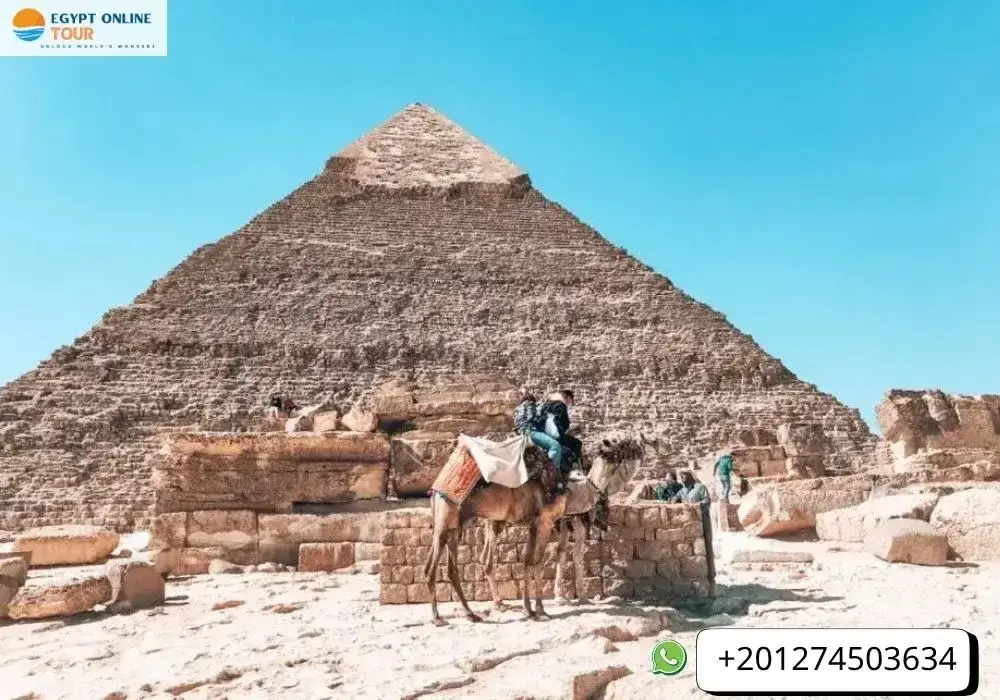
Choosing the right time can improve every part of your trip to Egypt. The weather, the crowds, and the experience all change with the season. Here's how to plan your journey for the best results.
Why Timing Matters
- From October to April, Egypt enjoys mild, sunny days.
- These months are ideal for walking tours, Nile cruises, and temple visits.
- June to August, in contrast, can be very hot, but also less crowded and more affordable.
- Even in summer, activities like diving in the Red Sea are excellent.
- Many travelers prefer the shoulder seasons in March, April, October, and November.
- These months offer comfortable weather and fewer tourists.
- For example, you can stroll through Al Moez Ldin Allah Al Fatmi Street without the summer heat or winter rush.
Seasonal Overview
This table summarizes what each season offers in terms of weather, crowds, and top experiences:
Season | Months | Weather & Crowds | Best For |
Peak Season | October – April | Pleasant days, popular sites crowded | Sightseeing, city tours, ancient monuments, Nile cruises |
Shoulder Season | March, April, October, November | Warm but not too hot, fewer visitors | Balanced experiences, street walks, photography, markets |
Low Season | May – September | Hot, especially in July and August, prices are lower | Diving, Red Sea resorts, and early morning indoor attractions |
Golden Hours and Night lights
Egypt’s beauty isn't just in its history. It shines at dawn and glows at night. Planning your trip around these times creates unforgettable moments.
Golden Hour Wonders
- Early morning or late afternoon light brings Egypt to life.
- At the Pyramids of Giza, the sunlight casts long shadows and golden tones.
- In Luxor, temples appear warmer and more vivid in soft light.
- A sunset Nile cruise offers glowing views across the water.
- Visit Al Moez Ldin Allah Al Fatmi Street near sunset for the perfect mix of cooler air and glowing architecture.
Magic After Dark
- After dark, many temples come alive with sound and light shows.
- For example, Karnak Temple offers a visual story under the stars.
- You can also enjoy a quiet dinner cruise as city lights reflect on the Nile.
- Nighttime in Egypt is cooler and often more relaxed.
Final Tips for Your Trip
- Choose October to April if you prefer cooler weather.
- Visit during the shoulder months for fewer crowds and better light.
- Summer is best for diving, swimming, and saving money.
- Plan photo sessions during the golden hour for stunning results.
- End your day with night tours, shows, or relaxing cruises.
Let our local travel experts help you design the perfect itinerary. Whether you're seeking adventure, culture, or relaxation, we've got you covered!
Al Moez Street Smart Walking Loop (South-to-North Itinerary in 90 Minutes)
Walking down Al Moez Ldin Allah Al Fatmi Street is like opening a living book of Islamic history. This fast, focused loop lets you see over 1,000 years of Cairo’s story, from minarets and madrasas to merchant houses and grand mosques.
Follow this 90-minute south-to-north loop to explore the most important monuments in chronological and geographical order. You’ll move through key dynasties, Fatimid, Mamluk, and Ottoman, with ease.
Why Start from the South?
- The south entrance (Bab Zuweila) marks the oldest preserved gate of medieval Cairo.
- It offers a natural flow through the main architectural landmarks in historical order.
- You avoid backtracking or confusion by walking in one straight line.
This method is ideal if you're short on time but want maximum value.
Smart Route Summary
Time | Location | What to See / Do |
0:00 – 0:20 | Bab Zuweila + Sultan Al-Muayyad Mosque | Climb the twin minarets for Cairo’s best Old City view. Visit the mosque next door. |
0:20 – 0:45 | Al-Ghouri Complex Area | Pass the domes and sabils of the Wakala of Al-Ghuri and Al-Fakahani Mosque. |
0:45 – 1:15 | Mamluk Monuments Cluster | Visit Qalawun Complex, Barquq Mosque, and other grand structures along the axis. |
1:15 – 1:30 | Northern Section | Explore Bayt Al-Suhaymi and Al-Hakim Mosque. End at Bab al-Futuh (north gate). |
Al Moez Street Monument Checklist ( South‑to‑north in 90 minutes)
Use this checklist to stay on track during your walk:
Stop | Details |
1. Bab Zuweila (Start Point) | The southern gate to Islamic Cairo. Climb it for panoramic views. |
2. Sultan Al-Muayyad Mosque | Located beside Bab Zuweila. Built on the site of an old prison. |
3. Wakala of Al-Ghuri | A 17th-century merchant inn with rich carvings and a central courtyard. |
4. Qalawun Complex | A major highlight featuring a mosque, madrasa, and mausoleum. |
5. Sultan Barquq Mosque | Mamluk-era building with unique stonework and elegant arches. |
6. Bayt Al-Suhaymi | Preserved Ottoman-era house offering a peek into old Cairo family life. |
7. Al-Hakim Mosque | Built by Fatimid Caliph Al-Hakim. Recently restored. Massive and peaceful. |
8. Bab al-Futuh (End Point) | Northern gate of the old city, grand finale of the route. |
Insider Tips for the Walk
- Time of Day: Go early morning or late afternoon to avoid heat and catch golden-hour photos.
- Footwear: Wear comfortable walking shoes. Surfaces are uneven in many places.
- Entry Fees: Many sites are free to view from the outside. Some, like Bayt Al-Suhaymi, require tickets.
- Photography: Take your best shots around Qalawun and Bab Zuweila during soft light hours.
For a complete list of the best things to do in Luxor, check out this detailed guide: Top Things to Do in Luxor.
Why This Loop Works Best
- No time wasted. You see the best in 90 minutes without repeating areas.
- It aligns with the historic northbound development of Cairo’s old city.
- Perfect for first-time visitors and returning travelers who want structure.
Fatimid to Mamluk Timeline
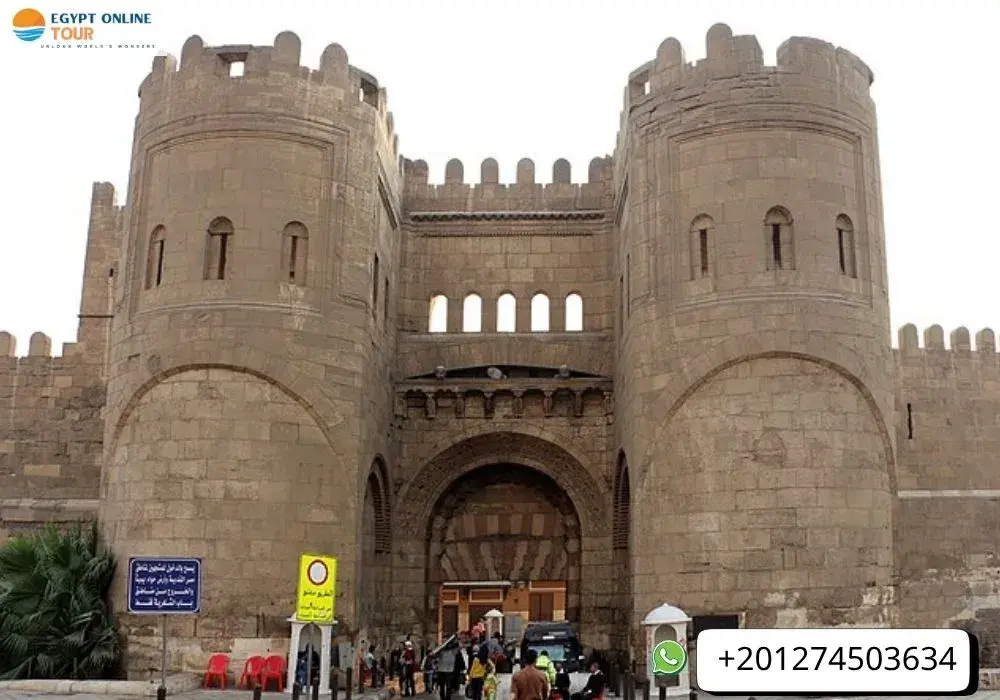
Across Al Moez Ldin Allah Al Fatmi Street, every stone whispers a story. From the Fatimid founders to the Mamluk builders, each dynasty added its mark. These eras shaped Cairo’s character, linking faith, art, and power in one living corridor.
Key Dynasties Shaping the Street
Fatimid Dynasty (10th–12th century)
- Founded Cairo in 969 AD and built Al Moez Ldin Allah Al Fatmi Street as its main axis.
- Established mosques, palaces, and learning centers that made the city a cultural capital.
- The street reflected the unity of religion, rule, and daily life under the timid vision.
- Early landmarks like Al-Hakim Mosque still show their distinct architectural identity.
- Consequently, this period defined the street’s spiritual and political foundation.
Ayyubid Period (12th–13th century)
- Restored many Fatimid buildings after years of neglect.
- Added fortifications and improved city walls to defend Cairo.
- The dynasty focused on stability and education, leaving behind restored sabils and schools.
- Their renovations kept Al Moez Ldin Allah Al Fatmi Street central to city life.
Mamluk Era (13th–16th century)
- Marked the golden age of Cairo’s architecture and craftsmanship.
- Built the Qalawun Complex, Sultan Barquq Mosque, and several ornate sabils.
- The Mamluks blended faith and beauty, turning the street into an open-air art gallery.
- They also expanded endowments for scholars and merchants.
- Consequently, trade and education flourished along the same road.
Ottoman Period (16th–19th century)
- Preserved much of the earlier heritage while adding elegant fountains and merchant homes.
- Continued the cultural rhythm of Cairo through new crafts and daily markets.
- The street became a blend of old empires and living Egyptian traditions.
Dynastic Layers of Al Moez Ldin Allah Al Fatmi Street
Dynasty | Period | Major Contribution | Key Landmark |
Fatimid | 10th–12th C | Founded Cairo; built the main axis | Al-Hakim Mosque |
Ayyubid | 12th–13th C | Restored defenses and schools | City gates and sabils |
Mamluk | 13th–16th C | Built major mosques and madrasas | Qalawun Complex |
Ottoman | 16th–19th C | Added sabils, homes, and shops | Bayt Al-Suhaymi |
Each dynasty left more than walls; they left rhythm, faith, and artistry.
That’s why walking down Al Moez Ldin Allah Al Fatmi Street feels like reading Cairo’s true history page by page.
For a more immersive experience, join the Grand Egyptian Museum Tour and explore its fascinating history.
Architectural Highlights
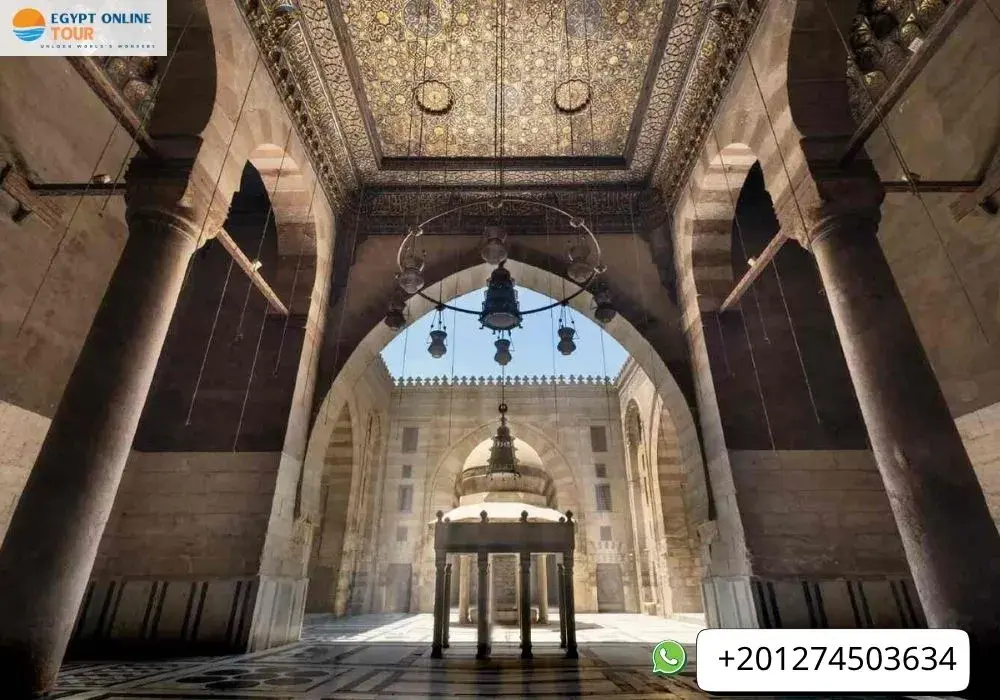
Al Moez Ldin Allah Al Fatmi Street is more than old stones. It’s a living gallery of Cairo’s soul. Every corner tells a story. From carved facades to shaded mashrabiya, the street blends beauty with purpose. While walking, you’ll notice how each detail reflects the city’s layered past. And because the street is still alive, the architecture feels close—not distant.
Facades, Mashrabiya, and Stonework
- Most facades face the street directly, making each building part of the walk.
- Though styles vary, many walls use limestone, which stays cool in summer.
- Because the street is narrow, facades are tall and close together.
- You’ll often see pointed arches above doors and windows.
- While some facades are plain, others show floral or geometric carvings.
- Mashrabiya screens hang from upper windows, offering shade and privacy.
- These wooden screens let air in, but keep harsh light out.
- Since many homes were built for merchants, mashrabiya helped women watch the street unseen.
- Stonework changes from one era to another, yet it always feels handmade.
- You’ll notice how Mamluk buildings use darker stone and bold patterns.
- Ottoman homes often show softer curves and more wood.
- Even newer restorations try to match the old textures.
- Because the street is a mix of eras, no two buildings look the same.
- Many facades include Quranic verses carved in Kufic script.
- Some walls still show marks from past repairs and fire damage.
- Though centuries old, the stonework still holds strong.
- Visitors often stop to touch the walls—they feel smooth but worn.
- At night, soft lighting makes the carvings stand out.
- Since the street is pedestrian-only, you can admire details up close.
- Even locals say they notice something new each time they walk by.
Architectural Styles Across Eras
Era | Material Used | Common Features | Notable Detail |
Fatimid | Limestone | Arched doors, plain facades | The early city layout is still visible |
Mamluk | Dark stone | Bold carvings, tall buildings | Deep geometric patterns |
Ottoman | Wood and plaster | Softer lines, mashrabiya screens | Elegant balconies and fountains |
Modern | Mixed restoration | Preserved facades, added lighting | LED lights highlight carvings |
Explore Al Moez Ldin Allah Al Fatmi Street, a treasure trove of Islamic art and history. This historic street hosts a wealth of monuments that tell the story of Cairo’s rich past. Each site offers a unique charm, drawing visitors into the heart of Egypt’s cultural heritage. Below are the key architectural gems you must see.
Qalawun Complex
- A grand medieval complex housing a mosque, madrasa, hospital, and mausoleum.
- Built by Sultan Qalawun in the 13th century as a symbol of faith and power.
- The ornate stonework and grand entrance are jaw-dropping.
- It reflects the height of Mamluk architectural style with intricate designs.
- Visitors marvel at its vast courtyard and detailed marble inlays.
Al‑Hakim Mosque
- Constructed in the 10th century, this is one of Cairo’s oldest mosques.
- Known for its striking stone facade and tall minarets piercing Cairo’s skyline.
- The mosque witnessed many historical events from the Fatimid era onward.
- Inside, the atmosphere is peaceful with white-tiled courtyards and soaring arches.
- It remains an active place of worship and a masterpiece of Fatimid design.
Al‑Aqmar Mosque
- Famous for its unique façade carved with symbolic Islamic motifs.
- Built in 1125 AD during the Fatimid period, with a bright white stone exterior.
- The mosque runs parallel to the street, breaking traditional architectural norms.
- Rich with history, it’s one of the earliest examples of Islamic urban architecture.
- It enchants visitors with its delicate decorations and spiritual ambiance.
Al‑Ghouri Complex
- A majestic blend of religious, educational, and funerary architecture from the Ottoman period.
- Includes the large Mosque of Sultan Al-Ghouri with elegant domes and minarets.
- The complex features a madrasa and a funerary shrine, showcasing Ottoman craftsmanship.
- It stands as a testament to Islamic devotion and architectural evolution.
- Visitors appreciate the serene courtyards and lively historic markets nearby.
Monuments at Al Moez Ldin Allah Al Fatmi and Their Significance
Monument | Era | Highlights | Visitor Experience |
Qalawun Complex | Mamluk | Mosque, madrasa, hospital | Architectural grandeur and history |
Al-Hakim Mosque | Fatimid | Stone facade, minarets | Spiritual calm and iconic views |
Al-Aqmar Mosque | Fatimid | Unique façade, symbolic carvings | Early urban Islamic art |
Al-Ghouri Complex | Ottoman | Mosque, madrasa, shrine | Ottoman architecture and culture |
Al Moez Ldin Allah Al Fatmi Street’s monuments capture centuries of Egypt’s spiritual and cultural journey.
To explore Egypt’s rich religious heritage, join the 15-Day Egypt Holy Family Tour .
Let our local travel experts help you design the perfect itinerary. Whether you're seeking adventure, culture, or relaxation, we've got you covered!
Madrasas and Sabil-Kuttabs
Education and charity shaped the spirit of Al Moez Ldin Allah Al Fatmi Street. Along this historic path, madrasas and sabil-kuttabs stood side by side, serving both minds and hearts. They formed the city’s cultural core, where faith, learning, and daily life met in harmony.
Function and Urban Role
Centers of Learning and Faith
- Madrasas were schools built beside mosques to teach the Quran, language, and law.
- Students came from across Cairo to study under respected scholars.
- Each madrasa had dorms, courtyards, and prayer halls for study and worship.
- Education was free and often supported by local endowments.
- Therefore, these places became strong symbols of community service and faith.
Sabil-Kuttabs: Water and Wisdom Together
- Sabil means public fountain, while kuttab means elementary school.
- They gave travelers clean water and taught children to read the Quran.
- The upper floor usually hosted the kuttab, while the ground level provided water.
- This combination of knowledge and charity reflected the Islamic view of good deeds.
- Consequently, every passerby—rich or poor—benefited in some way.
Architecture That Served People
- Builders used marble, wood, and calligraphy to make these structures beautiful yet practical.
- Many still stand today, blending art and utility in perfect balance.
- Their placement along Al Moez Ldin Allah Al Fatmi Street made education and water accessible to all.
- Moreover, they added rhythm and purpose to Cairo’s urban design.
Cultural Legacy
- These institutions strengthened social ties and encouraged lifelong learning.
- They turned the street into a walking network of generosity and education.
- Today, visitors still feel the same warmth that once filled these courtyards.
Role of Madrasas and Sabil-Kuttabs in Al Moez Ldin Allah Al Fatmi Street
Feature | Function | Social Value | Modern Example |
Madrasa | Islamic education and the study of law | Trained scholars and judges | Qalawun Complex |
Sabil | Public water distribution | Served travelers and the poor | Sabil of Abdel Rahman Katkhuda |
Kuttab | Quran and reading school for children | Promoted literacy and faith | Above many sabils on the street |
Madrasas and sabil-kuttabs turned Al Moez Ldin Allah Al Fatmi Street into more than a path. They made it a living classroom where generosity and learning still flow together.
Read about: How to Enjoy a Classic Holiday in Egypt
Caravanserais and Markets, Living Threads of Cairo’s Trade
Egypt’s past isn’t just in pyramids, it beats in its trade hubs. For centuries, caravanserais served as safe inns and trading stops for merchants crossing deserts. They were more than lodging; they shaped commerce and culture alike. Walk Al Moez Ldin Allah Al Fatmi Street today, and you trace their memory in each arch and alley.
Why Caravanserais Were More Than Inns
- They offered secure yards, rooms, and storage for traders and their goods.
- Because routes spanned deserts, safe stops were crucial for survival.
- Merchants exchanged news, stories, and customs while resting.
- Hence, these places became crossroads of culture and commerce.
How Markets Evolved from Caravan Posts
- Modern souks still echo the bustle of old caravan courts.
- You see vibrant wares: lamps, textiles, spices, and medals.
- Social life continues, people gather, talk, and haggle together.
- Markets keep traditions alive in a living scene, not a memory.
From Caravanserai to Market Today
Aspect | Then (Caravanserai) | Now (Modern Market) |
Role | Rest stop and trading hub | Shopping, culture, and social space |
Goods | Silk, spices, precious items | Lanterns, jewelry, perfumes, souvenirs |
Social Life | Exchange of stories, news | Coffee, street chats, live trade |
Security | Walls, gates, guarded yards | Open paths, roaming guards for safety |
Location | On trade routes across deserts | Historic precincts, heritage zones |
Read about: How many days do you need in Cairo
Khan al‑Khalili link
You simply cannot miss the Khan al-Khalili bazaar. It is the legendary successor to those old caravanserais. This market is the soul of Cairo. Stepping into its narrow alleys feels like entering another time. The air is filled with the clinking of tea glasses. You will also hear the friendly calls of shopkeepers. It is an unforgettable, immersive experience.
- A Shopper's Paradise: First, be ready to explore. The maze of shops sells everything imaginable. You can find beautiful lanterns, known as fanous. Shiny copperware is also common. Of course, there is also intricate jewelry. Remember to bargain politely. It is part of the fun and tradition.
- A Cultural Hub: However, shopping is only part of the appeal. Be sure to take a break. You can sit at a traditional coffee shop like El Fishawy. It is a famous historic café. There, you can sip sweet mint tea and watch the world go by. It is the perfect way to absorb the atmosphere.
- Historical Connection: The market's location is deeply historical. It sits near the end of the Al Moez Ldin Allah Al Fatmi street. This area was once part of the ancient city. Therefore, a visit here completes your journey through Egypt's commercial history. You are walking in the footsteps of merchants from centuries ago. Visit the Khan el-Khalili Cairo Egypt blog to learn about its fascinating history, best shops, and everything you can enjoy on your trip.
Why You Walk the Same Path
Visiting Khan al-Khalili feels like stepping into old caravanserai life. It stands at Al Moez Ldin Allah Al Fatmi’s end. The souk’s streets hum with voices, scents, and textures. You can wander past stalls, sip mint tea at El Fishawy, or just pause in the swirl of trade. Each shop, archway, and alley carries echoes of journeys once taken across deserts.
Museums and Houses on Al Moez Ldin Allah Al Fatmi Street
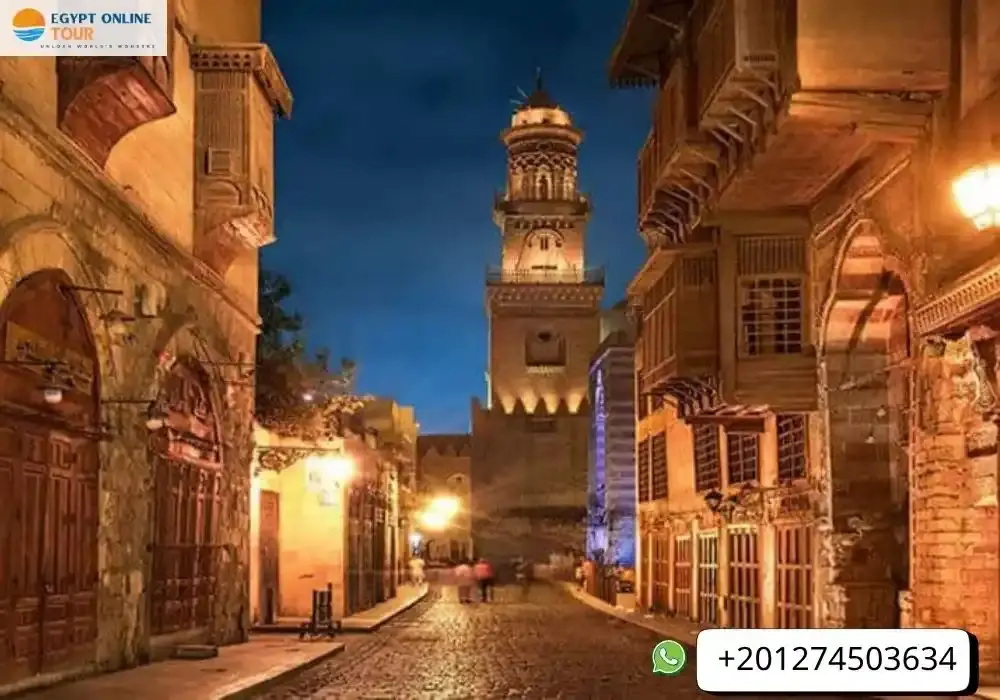
Al Moez Ldin Allah Al Fatmi Street features some of Cairo’s most enchanting museums and historic homes. These landmarks offer a deep dive into Islamic Cairo’s cultural heart. Visitors can explore beautifully preserved traditional houses that display daily life, art, and craftsmanship from centuries ago. The highlights include the famous Bayt Al-Suhaymi alongside other nearby gems. Together, they paint a vivid picture of Cairo’s history and heritage.
Read about Is Egypt a Popular Destination in 2025 ?
Bayt Al-Suhaymi and Nearby Gems
- Bayt Al-Suhaymi is a standout example of 17th-century domestic architecture.
- This traditional house showcases stunning woodwork, intricate mashrabiya windows, and peaceful courtyards.
- Walking through its rooms reveals how Cairo’s elite lived during the Ottoman era.
- Nearby, visitors find other historic houses rich with stories and ornate details.
- These sites offer a calm retreat from the bustling city and lively market streets.
- Many houses feature exhibitions of old crafts, traditional furnishings, and vibrant gardens.
- The atmosphere evokes a sense of stepping back in time while witnessing genuine Egyptian culture.
Museums and Houses Highlights
Site | What to Expect | Why Visit |
Bayt Al-Suhaymi | Wood carvings, courtyards | See Ottoman-era home life |
Nearby Historic Houses | Traditional architecture | Experience daily life and craft |
Small Museums | Local art and artifacts | Learn Cairo’s cultural heritage |
Gardens | Peaceful shady areas | Relaxation and inspiration |
Al Moez Ldin Allah Al Fatmi Street’s museums and houses offer a window into Egypt’s rich past and living traditions.
Discover Egypt’s wonders with our Egypt Classic Tours , offering customized journeys for unforgettable experiences. Book your Egypt tour package now and start your adventure!
Shoot‑Worthy Angles on Al Moez Street
Under the glow of lanterns or sunlight, Al Moez Ldin Allah Al Fatmi Street offers endless photo moments. From graceful arches to winding lanes and dramatic night scenes, here’s how to capture its soul.
- Aim low: shoot upward from alley floors to catch soaring domes and minarets.
- Frame with arches: Use doorways or arch spans to surround your subject.
- Use reflections: puddles, windows, or wet cobbles reflect lamps or sky beautifully.
- Symmetry rules: center your shot along straight sections of street for balance.
- Layer your scene: place foreground (lanterns, arches) + middle (people) + background (mosques).
- Look for golden light: late afternoon softly outlines stone or carved reliefs.
- Adjust for side light: it reveals texture in stone and wood details.
- Capture locals in motion: street vendors, craftsmen, or walkers add life to still scenes.
Arches, Lanes, and Night Shots
- At dusk, lighted arches glow; use a slow shutter to get soft light.
- Use narrow lanes: they lead the eye toward a gate or mosque dome.
- Night time: try a 5–10 second exposure with a tripod to capture luminous minarets.
- Lamp light: position under a lamp or hanging lantern for a dramatic glow.
- Capture silhouettes: people in arch frames look poetic against lit walls.
- HDR mode helps: it balances bright lights and shadows in night scenes.
- Walk slowly: pause at alleys, hidden corners often deliver surprising shots.
- Use long exposure in busy spots: blurred motion frames still architecture.
Angle & Time Tips for Best Results
Time of Day | Angle Type | Why It Works | Pro Tip |
Golden Hour | Arches + front stories | Warm stone and highlights carvings | Face your subject to the glow |
Midday Shade | Framed shadow arches | Reduces harsh contrast under shade | Use a wider lens to include context |
Evening / Night | Lit arches + minarets | Contrast between light and dark | Use a tripod + slow shutter speed |
Late Night | Silhouettes in lanes | Clean dark sky as a backdrop | Wait for pedestrian gaps |
Visitor Rules
Before you explore Al Moez Ldin Allah Al Fatmi Street, it helps to know the simple rules that keep your visit smooth and respectful. Since this area is both a heritage site and a living neighborhood, small gestures of care make a big difference. You’ll enjoy the walk more, move freely, and blend naturally with daily life around you.
Tickets, Security, and Dress Tips
Entry and Tickets
- The street itself is free to enter, yet some monuments charge small fees.
- Always carry small cash; not every ticket booth accepts cards.
- Foreign visitors pay slightly more than locals, but prices remain affordable.
- Guided tours often include entry fees, saving you time at each site.
- Since tickets are checked at specific gates, keep them handy throughout your visit.
Security and Etiquette
- Police patrols and guards are always present, so you’ll feel safe.
- Bags may be checked at the main gates for everyone’s safety.
- Photography is allowed, but inside mosques, ask before taking pictures.
- Avoid touching artifacts or leaning on old walls; preservation is vital.
- Be polite with vendors and locals. A simple smile goes a long way.
- Consequently, these courtesies maintain the calm spirit of Al Moez Ldin Allah Al Fatmi Street.
Dress Code for Respect
- Modest clothing is appreciated, especially when entering mosques.
- Shoulders and knees should be covered for both men and women.
- Comfortable shoes are essential; the pavement is uneven in places.
- Light, breathable clothes work best during the day.
- Scarves for women can be useful, particularly near prayer times.
- Sunglasses and hats protect from the strong afternoon sun.
Quick Visitor Guide for Al Moez Ldin Allah Al Fatmi Street
Category | Recommendation | Reason |
Tickets | Carry small cash | Some booths lack card machines |
Security | Expect light checks | Ensures safety for all visitors |
Dress Code | Modest, light clothes | Respect culture and beat the heat |
Best Visiting Time | Late afternoon | Cooler weather, great lighting |
Photography | Allowed in open areas | Ask before inside mosques |
Following these simple rules keeps your visit pleasant and respectful.
Al Moez Ldin Allah Al Fatmi Street is more than a tourist stop; it’s a living heritage walk. When you follow the customs, you help protect Cairo’s timeless heart for generations to come.
Street Life and Crafts
The history of Al Moez Ldin Allah Al Fatmi Street lives in its monuments, but its soul lives in its workshops. Here, the centuries-old tradition of commerce thrives, creating a vibrant marketplace for brass, leather, and fine textiles.
Walking through the street is an active experience, not just a historical tour. You feel the constant rhythm of Old Cairo life.
- It’s a Living Souq. Even with the grand monuments, Al Moez Ldin Allah Al Fatmi Street remains a busy market axis.
- Therefore, you see artisans working their trade right next to mosques built by sultans.
- The Sounds of Skill. The clanging of hammers on metal and the whir of textile looms fill the air.
- Consequently, the atmosphere is a unique blend of spiritual calm and economic energy.
- A Pedestrian Paradise. Because the street is closed to cars during the day, it's safer and easier to explore on foot.
- Moreover, this allows you to stop, chat with vendors, and soak up the local charm.
- Furthermore, the shops here offer a more curated selection of traditional goods than nearby Khan El Khalili.
- Also, you can find tiny, old cafés where you can sit and watch the world go by for hours.
Brass, Wood, and Textiles
The street and the narrow alleys nearby are famous for specific, high-quality handicrafts. These items carry the spirit of Egyptian heritage.
- Brass and Copper. You find stunning lanterns, inlaid trays, and decorative pots.
- For instance, look for the exquisite brass lamps that look exactly like the ones used hundreds of years ago.
- Woodwork. Look for small wooden boxes, fine jewelry cases, and detailed lattice screens (mashrabiya).
- Textile Art. The nearby Tentmakers' Street is famous for khayamiya. This is the vibrant, hand-stitched decorative appliqué used for wall hangings and cushions.
- Silver and Spices. Also, many small shops sell traditional silver jewelry and high-quality local spices and perfumes.
Craft Category | What to Look For | Value Add for Visitor |
Metalwork | Ornate lanterns, inlaid trays. | Authentic, unique souvenirs that light up beautifully at night. |
Textiles | Khayamiya appliqué, hand-woven scarves. | Proof of ancient stitching skills; a genuine piece of Egyptian folk art. |
Daily Life | Traditional cafés, sweet shops. | A chance to rest, meet locals, and taste authentic Egyptian mint tea. |
In short, Al Moez Ldin Allah Al Fatmi Street offers a chance to buy directly from tradition. Therefore, your visit supports the local artisans who keep these thousand-year-old crafts alive.
The added time lets you discover hidden spots, meet locals, and relax under wide open skies—much like the peaceful rhythm described in How to spend a week in Dahab, Egypt .
Food and Cafés
Al Moez Ldin Allah Al Fatmi Street isn’t just about history. It’s also a place to eat, rest, and enjoy. While walking, you’ll smell grilled meats, fresh bread, and sweet spices. Because the street is full of life, cafés and food stalls are part of the experience. And since many spots are family-run, the food feels homemade.
Traditional Bites on the Route
- Khan El Khalili Restaurant & Naguib Mahfouz Cafe serve grilled kofta, lentil soup, and mint tea.
- Though it’s popular with tourists, locals still come for the quiet courtyard.
- Cafe Abu Al Arabi offers fresh falafel, tahini, and warm baladi bread.
- Because it’s right on Al Moez Ldin Allah Al Fatmi, it’s easy to find.
- Saheb El Sa'ada mixes food with music. You’ll hear oud while eating molokhia and rice.
- Though it’s lively, the service stays fast and friendly.
- Oldish (Restaurant & Cafe) blends Egyptian and global dishes. Try their shakshouka or pasta with local herbs.
- Since it’s tucked behind a courtyard, it feels calm even when busy.
- Cafe Lord is open all day. You’ll find tea, coffee, and simple sandwiches.
- Though small, it’s a good stop between monuments.
- El Fishawy Cafe is famous for its old mirrors and strong coffee.
- Because it’s near Khan El Khalili, it’s often full, but worth the wait.
- Fatatry El Hussein Pancake Restaurant serves sweet and savory feteer.
- While the menu is short, the taste is rich and filling.
- Baba Abdo is known for grilled meat and rice dishes.
- Though it’s open 24 hours, evenings are best for fresh food.
Café Highlights Near Al Moez Ldin Allah Al Fatmi
Café Name | Specialty Dish | Atmosphere | Best Time to Visit |
Khan El Khalili & Naguib Mahfouz Cafe | Kofta, mint tea | Courtyard calm | Late afternoon |
Cafe Abu Al Arabi | Falafel, tahini | Street-side casual | Morning or noon |
Saheb El Sa'ada | Molokhia, rice | Musical & lively | Evening |
Oldish (Restaurant & Cafe) | Shakshouka, pasta | Courtyard quiet | Midday |
Cafe Lord | Tea, sandwiches | Quick stop | Anytime |
El Fishawy Cafe | Strong coffee | Historic charm | After sunset |
Fatatry El Hussein Pancake Restaurant | Feteer (pancake) | Cozy & sweet | Night |
Baba Abdo | Grilled meat, rice | Local favorite | Evening |
Select Egypt Luxury Tours for a journey of comfort, elegance, and unforgettable moments.
Events and Closures
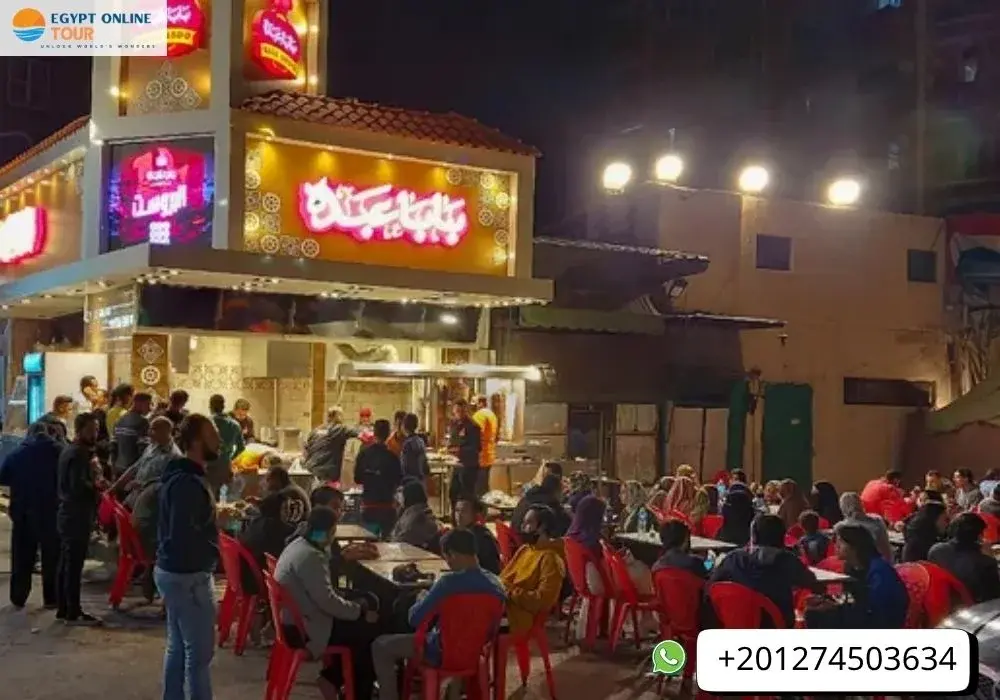
Planning your visit well matters. While this street welcomes visitors most days, events or seasons can affect access. Keep these updates in mind.
- Public holidays often bring more crowds. Yet, some museums or heritage buildings may close without prior notice.
- Fridays stay open. Still, expect prayer times to cause some areas to pause.
- Weekends (especially Thursdays) feel busier. Arrive early to enjoy the quiet.
- Traffic rules change during large festivals. Therefore, parking nearby may be limited.
- Local events sometimes restrict full street access. However, the main walkway usually remains open.
- Weddings or private shoots may block key arches or courtyards. Ask a guard before entering.
- Maintenance work is rare. Still, if it happens, signs usually appear at the entrance gates.
- Vendors set up more during peak tourism seasons. That brings color, yet narrows the walking space.
- Entry to mosques may close briefly during prayer or cleaning. Plan photo time accordingly.
- Tour groups gather by noon. To avoid crowds, try to arrive in the early morning.
Ramadan Nights and Seasonal Notes
- During Ramadan, the street stays open late. Lanterns glow, and music plays near cafés.
- Many families visit after Iftar. Therefore, expect crowds after sunset.
- Street performances and traditional food stalls appear often. You’ll enjoy a warm, festive mood.
- Although cafés stay open, some shops close earlier than usual. So, shop before Maghrib.
- Winter months feel cooler and more pleasant. Yet, nights can be cold, so bring a jacket.
- Summer visits are possible. Still, mornings are better due to the strong afternoon heat.
- Cultural events rise during the Eid holidays. Yet, closures can happen before or after Eid.
- Autumn brings fewer crowds. However, sudden dust winds may reduce visibility.
- Spring adds a nice breeze. Still, pollen may bother those with allergies.
- Some live events happen without notice. Always check signs or ask a local guide.
Accessibility Notes
Before exploring Al Moez Ldin Allah Al Fatmi Street, you’ll want to know how easy walking and access really are. Below are practical notes on paving, ramps, and places to rest. Use them to plan a smoother, more comfortable visit, especially if you have mobility needs or want to explore at an easy pace.
- The main route is mostly stone paving; uneven slabs appear in older sections.
- Some side alleys use small cobbles; tread carefully when walking.
- Street levels often change gradually; there are few steep steps in the core zone.
- Signage helps you find safer paths that avoid steep stairs.
- During wet days, some stones become slippery; wear shoes with grip.
- Rest points exist as shaded benches near major monuments and fountains.
- Many cafés along both sides offer seats and shade interspersed regularly.
- Water fountains and public toilets appear at intervals along the route.
Read about: How to Plan a Trip to Cairo Egypt
Paving, Ramps, and Rest Points
- Paving: Broad walkways are made of limestone slabs; they remain smooth in most parts.
- Ramps: Certain mosque entrances include shallow ramps for wheelchair access.
- Museum entrances in this area often have ramps beside steps for easier entry.
- Rest Points: Benches under arches or trees appear every 150–200 meters.
- Café stops: You’ll find many shaded cafés with chairs facing the street.
- Shade covers: Some alleys are shaded by overhangs of historic buildings.
- Lighting: At dusk, soft lighting makes paths safe and visible.
- Helper service: Guides may offer assistance with uneven terrain or steps.
Accessibility Features of Al Moez Street
Feature | What You’ll See | Why It Helps |
Broad limestone paving | Smooth walking surface | Reduces trip hazards for most visitors |
Ramps at key entries | Besides steps into mosques, museums | Helps wheelchair users and those with difficulty |
Shaded benches | Under arches or beside fountains | Let's you rest and enjoy the view |
Café seating | Chairs outside shops and cafés | Offers frequent rest and shade |
Lighting at twilight | Warm lights along paths | Improves safety and visibility after dark |
These notes give you confidence before arrival. Whether you walk fast or slow, Al Moez Ldin Allah Al Fatmi Street remains reachable and full of stories.
Don't risk getting lost in a millennium of history. A guided walk is the only way to hear the hidden stories behind every archway. Book your spot today to guarantee a smooth, insightful, and memorable journey through Islamic Cairo.
Book your Al-Moez walking tour
We make seeing the best of historic Cairo simple and stress-free. Avoid confusing routes and crowded groups. Therefore, choose a tour designed for comfort and depth. Furthermore, booking now ensures you have a licensed expert guide dedicated to your experience.
Small-group option, licensed guide, free reschedule
This tour package is built to give you the highest possible value. Consequently, you get personalized attention without the cost of a full private tour.
- Small Group Size. Firstly, we limit the group size strictly. This ensures a quiet, personalized experience for every guest.
- Licensed Egyptologist Guide. Also, your guide is a certified expert. They will share the deep, hidden stories behind the street's major monuments.
- Flexible Booking. Moreover, you can reschedule your date for free up to 24 hours before the trip. This gives you complete peace of mind.
- The Best Pace. Because the group is small, the guide can adjust the pace to fit your energy level.
- Focus on History. Ultimately, this format allows you to focus purely on the architectural beauty and history of Al Moez Ldin Allah Al Fatmi Street.
- No Hidden Costs. Therefore, the price includes all necessary entrance fees and tickets for the mosques.
Tour Feature | Visitor Benefit | Competitive Edge (Why Choose Us) |
Small Group | Personalized attention; easy navigation through narrow souqs. | Deeper learning; better photo opportunities without crowds. |
Licensed Guide | Access to expert knowledge and hidden historical details. | Guaranteed quality; stories, not just facts. |
Free Reschedule | Risk-free booking up to 24 hours in advance. | Total flexibility; travel plans can change. |
All-Inclusive Price | Covers entrance fees and required tickets. | Zero surprises; a clear, simple budget. |
In short, skip the large bus tours. Instead, choose the comfort and depth of a specialized walking tour. Finally, let your expert guide from Egypt Online Tour bring the thousand-year history of Al Moez Ldin Allah Al Fatmi Street to vibrant life.
Read about: Siwa Oasis travel tips
Summery
Al Moez Ldin Allah Al Fatmi Street is where Cairo’s heart still beats.
Each step reveals history, faith, and daily life woven together. Don’t just read about it, walk it. Feel the call to prayer echo through time and see stories carved in stone. Plan your visit with Egypt Online Tour today and live the experience that defines Cairo’s soul.
Frequently Asked Questions
1 What is Al Moez Ldin Allah Al Fatmi Street known for? ▶
2 Where is Al Moez Ldin Allah Al Fatmi Street located? ▶
3 Why do tourists visit Al Moez Ldin Allah Al Fatmi Street? ▶
4 What are the must-see spots on Al Moez Ldin Allah Al Fatmi Street? ▶
5 Can I visit Al Moez Ldin Allah Al Fatmi Street at night? ▶
6 Is it free to walk through Al Moez Street? ▶
7 What’s the best time to visit Al Moez Ldin Allah Al Fatmi Street? ▶
8 How old is Al Moez Ldin Allah Al Fatmi Street? ▶
9 Are there good photo spots on Al Moez Street? ▶
10 How do I get to Al Moez Street from downtown Cairo? ▶
Popular Categories
Popular Posts

Top Alexandria Beaches You Must Visit 2026
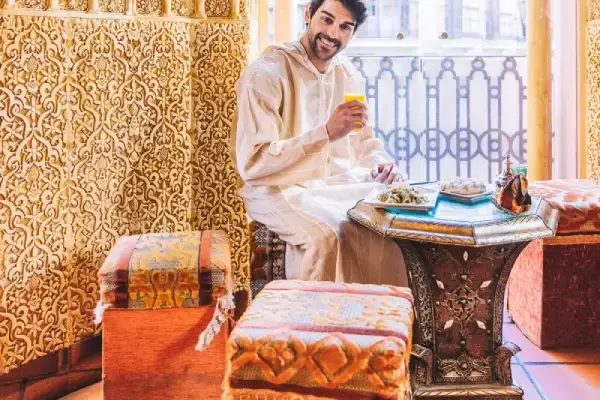
What are the important holidays in Egypt?
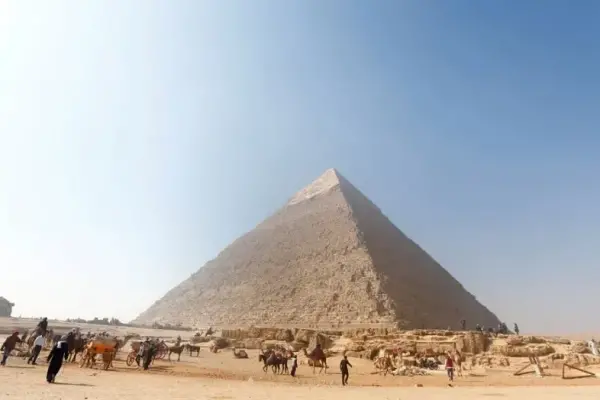
What countries have pyramids- Know the full details
Related tours
Cairo, Aswan, and Luxor
-
Price
$ 5,900
-
Type
Package
Cairo, Aswan, and Luxor
-
Price
$ 1,850
-
Type
Package
